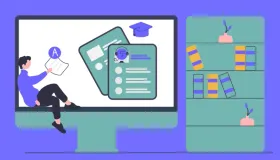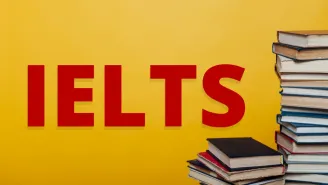How the Other Half Thinks Reading Answers Passage
How the Other Half Thinks Reading Answers Passage
Paragraph A: Beautiful, beginner-friendly passages can sometimes be found in otherwise challenging musical compositions, even in maths. Some discoveries in higher mathematics do not require familiarity with any specific branch of mathematics, not even the more common ones like algebra, geometry, and trigonometry. Instead, they may only necessitate some basic math (such as "the sum of two odd numbers is even") and logic. All eight chapters herein serve to demonstrate this phenomenon. The reasoning can be followed by any layperson.
Each chapter's reasoning makes use of no more than elementary mathematics. This way, every reader will have the opportunity to take part in a mathematical experience, enjoy mathematics for its aesthetic value, and become accustomed to the rational yet creative approach taken by mathematicians.
Paragraph B: One reason I wrote this book was to help those who might not have been exposed to real mathematics before developing an appreciation for mathematical thought. Not only do I wish to share some of the remarkable findings but also the logic that led to them. This book deviates from the norm of popular mathematics texts in that regard. There are even biographies of eccentric mathematicians. A number of other authors discuss significant mathematical applications. The reader is assumed to be familiar with algebra in works that delve into mathematical techniques.
Paragraph C: It is my sincere wish that this book will serve as a means toward healing the chasm that exists between the arts and the sciences, or, perhaps more accurately, involving the left (analytical, numerical) and right (intuitive) brain. It will become clear from the chapters that mathematics includes more than just analysis and computation; intuition or intuitive thinking also plays a crucial role. Because we rarely make use of either hemisphere's full potential, the purported gap can be reduced or eliminated in every individual. I use the examples of an artist structural engineer, a mathematician short story writer, an opera singer who published mathematical studies, and a mathematician who published short stories to demonstrate the breadth of human potential.
Paragraph D: Even though mathematics forms the backbone of other scientists' theories, they often leave it out of texts designed to explain their areas to the general public. Since mathematics is the ideal language for presenting the details in most science, the reader is left a tantalized observer rather than an active participant. This is true whether the topic at hand is the expanding universe, subatomic particles, or chromosomes. When a piece of the physical universe is ultimately grasped, its description often seems like a page in a mathematical manual, even though the broad. An outline of a scientific theory can be sketched intuitively.
Paragraph E: Even so, even a reader with little background in mathematics can grasp the essentials of mathematical reasoning. In-depth analysis, experimentation, and ideas that are characteristic of the mathematical mode of thought are presented here. These pages will be turned at a far more leisurely pace than a novel or newspaper. Having a pencil and paper handy might be useful for verifying statements and conducting experiments.
Paragraph F: I designed this book with two audiences in mind: people who liked math up until a bad experience, generally in fifth grade, put them off, and math nerds who will find a lot of fresh material to like. Readers who merely wish to hone their analytical abilities may also find value in this work. Profound, exact analysis is essential in many fields, including law and medicine. Each chapter provides opportunities to follow a well-developed path of reasoning. These two testimonies demonstrate the potential of mathematics to foster this skill:
Paragraph G: A doctor once wrote that his background in mathematics and its emphasis on analytical thought processes had prepared him well for his studies in medicine. To find a remedy to an issue in medicine, one must first conduct extensive research. Essentially, it's the same as solving a math problem.
A similar statement was made by a successful lawyer, who said, "Despite having no experience in law - not even one political science course - I did well at one of the greatest law schools." Much of my accomplishments there may be attributed to the analytical skills I honed while studying mathematics and, more specifically, theorems. In contrast to their peers, lawyers with a mathematical background are better able to understand and apply the law.
I'm hoping you'll take as much pleasure as I do in seeing seemingly straightforward inquiries yield unexpectedly ingenious answers and seemingly theoretical findings find unexpectedly practical uses.
How The Other Half Thinks Reading Answers with Sample Questions
Have you read the passage? Now, take the test and find the Preface To How The Other Half Thinks Reading answers! Try to answer these questions by yourself before you sneak a peek at the answers given below.
Check Out Top 20+ IELTS Reading Practice Test Questions with Answers
Below are some top 20 free IELTS Reading Practice test online questions with detailed answers to enhance your IELTS preparation online. We have provided sample passages for each test type for your reference.
- What Is Exploration Reading Answers
- Effects Of Noise Reading Answers
- The Discovery Of Baby Mammoth Reading Answers
- The Dead Sea Scrolls Reading Answers
- The Ring-Tailed Lemur Reading Answers
- Why We Need To Protect Polar Bears Reading Answers
- Nutmeg A Valuable Spice Reading Answers
- What Is Meaning Reading Answers
- Cutty Sark Reading Answers
- The Step Pyramid Of Djoser Reading Answers
- South Pole Adventurer Reading Answers
- The Future Of Work Reading Answers
- Ambergris Reading Answers
- Trees In Trouble Reading Answers
- Could Urban Engineers Learn From Dance Reading Answers
- The Flavour Of Pleasure Reading Answers
- The Value Of A College Degree Reading Answers
- Why You Should Delegate Tasks To Team Members Reading Answers
- Corporate Social Responsibility Reading Answers
- Forest Management In Pennsylvania USA Reading Answers
- Making Time For Science Reading Answers
- The Power Of Play Reading Answers
- Coastal Archaeology Of Britain Reading Answers
- Online Roommate Finder Toronto Reading Answers







